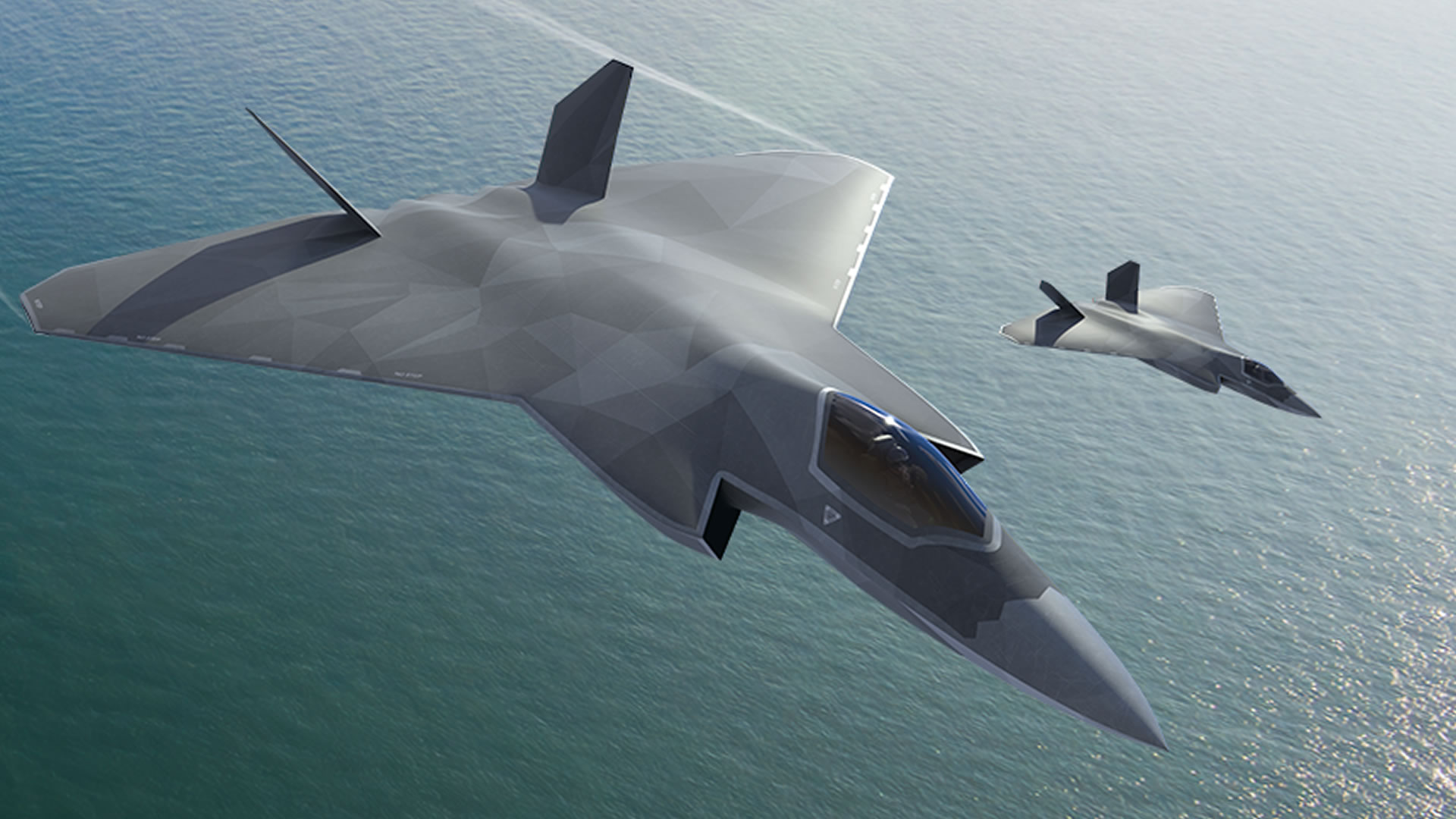UK, Italy, Japan’s 6th-gen fighter could feature AR, laser weapons


Visitors to this year's Farnborough Airshow in the UK will be treated to a concept model of the UK, Italy, and Japan's planned Global Combat Air Programme (GCAP) sixth-generation fighter. Called the Tempest, the fighter's development was first announced in December 2022. Under the agreement, the three countries will jointly develop the aircraft, with BAE Systems leading the project.
By all accounts, the new concept showcases significant improvements in aerodynamics compared to other aircraft. For example, its enlarged, modified delta wing will provide greater control and mission flexibility. The air intakes are angled for better stealth, and there is a noticeable raised section ahead of the v-shaped tail that contains S-shaped ducting for the engine air inlets, reducing the aircraft's forward radar signature.
The jet engine being developed by Rolls Royce has several enhancements, including improved exhausts for lower heat and radar signatures. It has 10 times more electrical power output than current combat aircraft engines, enabling it to power directed energy weapons like lasers.
Tempest to fly by 2027
The engine features[1] an integrated electrical starter generator embedded in the engine core, saving space and eliminating the need for an external gearbox. "In the 18 months since the launch of the Global Combat Air Programme, we've been working closely with our industrial partners in Italy and Japan under the collaboration agreement, and also with the three governments, to understand and align requirements for a next-generation combat aircraft," said Herman Claesen, Managing Director, Future Combat Air Systems, BAE Systems.
"The new model unveiled at Farnborough International Airshow shows notable progress in the design and [conception] of this future fighter jet. We'll continue to test and evolve the design, as we move closer towards the next phase of the program," he added. [embedded content]
The "Tempest"[2] is being developed by a consortium including BAE Systems Military Air & Information, Mitsubishi Heavy Industries, and Leonardo S.p.A. The aircraft will feature an augmented reality cockpit with a minimal number of physical controls and readouts. Instead, the pilot's visor will project virtual instruments and controls onto surfaces.
The aircraft will also heavily rely on artificial intelligence, which can learn from its pilot. This will enable the pilot-optional operation and allow the advanced computer system to network with other platforms and handle many duties, freeing the pilot to act as the mission commander. It also helps that Leonardo's radar is a powerful next-generation system capable of delivering 10,000 times more data than current systems.
Its future is uncertain in the UK
After the recent change in government in the UK, there are concerns about whether the project will move forward, as there have been no commitments regarding future spending for the project.
The "Tempest"[3] was originally scheduled to have its maiden flight in 2027 and to be in service with the Royal Air Force, Japan Air Self-Defense Force, and the Italian Air Force by 2035. However, the aircraft's presence at the Farnborough Airshow strongly suggests that the partners are strongly considering the export market. "GCAP is a strategically important partnership, bringing together the governments of the UK, Italy, and Japan, and their respective industries, to collaborate on shared military and industrial objectives in the delivery of a next-generation combat air capability," BAE Systems[4] explained in a press release.
"The program is hugely significant for the security, political and economic prosperity of each nation and, through effective knowledge and technology transfer, will help to evolve and deliver important sovereign combat air capability in each nation for generations to come," it added. NEWSLETTER
The Blueprint Daily
Stay up-to-date on engineering, tech, space, and science news with The Blueprint.
ABOUT THE EDITOR
Christopher McFadden[5] Christopher graduated from Cardiff University in 2004 with a Masters Degree in Geology. Since then, he has worked exclusively within the Built Environment, Occupational Health and Safety and Environmental Consultancy industries.
He is a qualified and accredited Energy Consultant, Green Deal Assessor and Practitioner member of IEMA.
Chris’s main interests range from Science and Engineering, Military and Ancient History to Politics and Philosophy.
References
- ^ engine features (newatlas.com)
- ^ The "Tempest" (interestingengineering.com)
- ^ The "Tempest" (www.raf.mod.uk)
- ^ BAE Systems (www.baesystems.com)
- ^ Christopher McFadden (interestingengineering.com)